

Skating is an art to which all ladies should attain. It is especially feminine in its character, graceful, elegant, requiring little apparent force, and yet affording good exercise. Ladies soon learn to skate. I have had the honor of initiating several ladies to the art, and have been surprised by the felicity with which they learn it. Whether from some innate quality of the feminine sex, I know not, but it is invariably the case, that if a boy and a girl, or a gentleman and lady, of equal ages, and having enjoyed equal advantages, are put upon skates for the first time in their lives, the lady always manages to skate independently sooner than the gentleman.
– The Eclectic Magazine, Agnew, John Holmes & Bidwell, Walter Hillyard; Feb, 1863, New York, USA
The Belgian Joseph Merlin is credited with inventing the first roller skates in 1760; wearing his new skates at a party in London, he crashed into an expensive mirror. The early skates had iron wheels.
Road skates such as the Ritter became popular in the 1890s. While ice skating and quad roller skating were favoured by women, road skating became a predominantly male sport.


1896 RITTER ROAD SKATES
Size 10/11
Wheelbase of each skate: 8.5″
Length of top of each skate: 11″
Manufactured by the Road Skate Co, 271 Oxford St, London
(Now sold)

Every year throughout the late 19th century and early years of the 20th century, more amazing ‘novelties’ on wheels made their debut. Engineering companies throughout the industrial world were cashing in on a remarkable consumer boom in new forms of personal transportation, and professional and amateur inventors everywhere were cobbling together primitive ‘vehicles’ of all sorts to satisfy public demand. More often a patent made the inventor more money than its production.
Bicycles were the latest fashion in the mid-1890s. So you can almost imagine Mr Ritter waking up one morning with his ‘eureka’ moment …a pair of roller skates with the skater standing on top of a pair of miniature bicycles! It’s a credit to the foresight of the inventor and the engineering company that produced these skates that a few still survive twelve decades later in fully working order.

Every Ritter skate is stamped either ‘left’ or ‘right.’ It also shows the size. One of this pair is a size 10 and the other a size 11. However, they are the same wheelbase and size. Every skate is hand built so they do vary, and sizes appear to relate to width as much as length.
Each Ritter skate has a brake with a return spring and an eyelet at the top. String is attached to the eyelet and the other end could be held in the skater’s hand. My assumption is that this would have been for novice skaters.
The well known Bartleet’s Bicycle Book, published in 1931, shows a pair of Ritter skates with the top of the string tucked through the leather strap at the top of the wooden leg support. The text accompanying the illustration (below) states: ...The skates weigh 40 lbs each and each skate is secured to the boot by clips on the principle of the ‘Acme’ ice skate. The wheels run on ball bearings and, as you can see below, feature a braking system reminiscent of that of the velocipede. The brake is applied to the rear wheel by pulling the cord which follows the wooden strut up to within a few inches of the skater’s knee.
However, this gives the impression that the skater would bend down and pull the string to activate the brake, which is wrong. In fact the string extended to the skater’s pocket, and sometimes had a wooden handle on the end. These skates need a length of string attached if you wish to activate the brake. If you look closely at the photos, you can see that each brake is fitted with a return spring.

Ritter skates are well constructed. This pair is in good condition. Various minor repairs have been made, to a high standard, and the skates have recently been serviced. A bar on the side opens up to clamp the shoe in place, though the skates are made for people with narrow feet. The boots supplied fit into the clamps, but modern shoes and boots with wider soles would not. However, if you strap the wooden supports around your leg, it’s not necessary to clamp the boots for casual skating.
The wooden leg supports are in good condition, though one has had a past repair at the top (it has been glued). The boots are a narrow size and are in good condition. The gaiters are separate to the boots.
The Ritter skates are sturdy and fully functional.
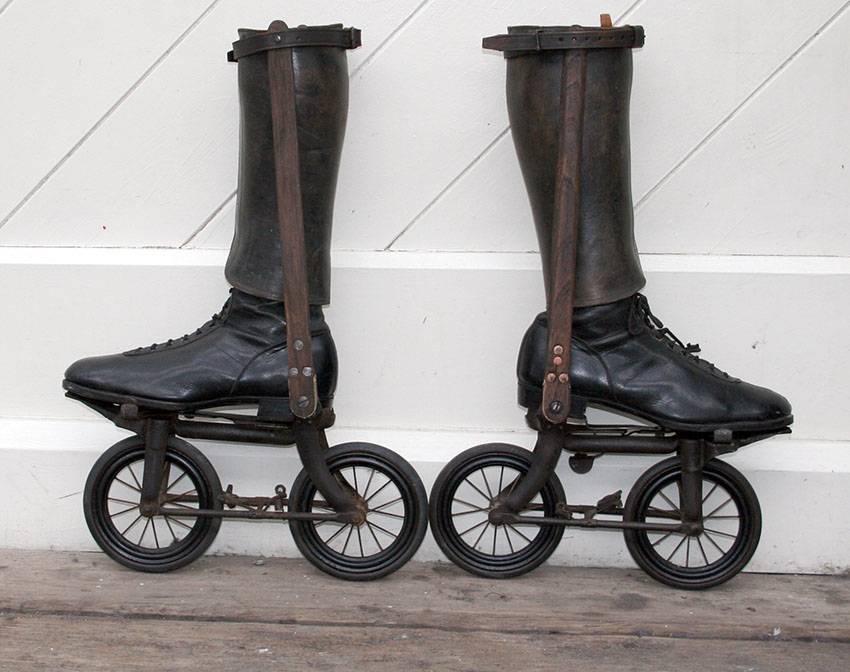

Each skate carries Ritter’s patent stamp and the company name and address.
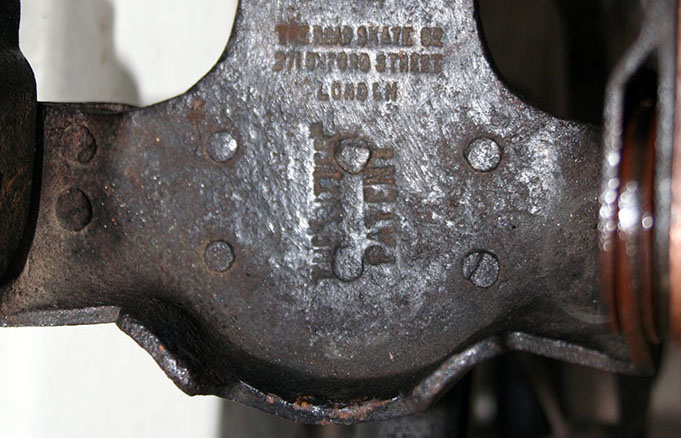

THE ROAD SKATE Co
271 Oxford St. London W, England
The skates were marketed by The Road Skate Co of Oxford Street, London. The company also issued a booklet – free of charge – on ‘Road Skating’ which purports to give ‘every information on the subject.’ The design was unique to this style of skate. One of the company’s adverts proclaims:
Unlike other skates, the Ritter Road Skate has a hinged splint on either side of the leg, which in conjunction with the brake, entirely prevents any twisting or undue strain on the ankle joint. People with the weakest ankle may therefore use this skate, and derive great benefit from the exercise. It only requires a little practice on the new Ritter Road Skate to enable anyone who has never had on a pair of skates to attain proficiency, and be able to skate on the roads at any speed up to 16 miles an hour.

‘Road Skates’ were the ancestors of roller skates. They were invented by Mr. Ritter, a Swiss, who was foreman at the original Napier Works at Vine Street, Lambeth, London, where (later) the first Napier motor-cars were made. The Ritter skates were popular around 1897/ 1898, and several well-known cyclists, notably M. S. Napier, Walter Munn, and A. Hoffman, formed a club and skated on the road every week-end. When last heard of (1929) Mr. Ritter was in business as an engineer in Paris under the name of Ritter and Smith, 35 Rue Batignolles. (These premises are now occupied by a hair salon ‘Caroline Coiffure’).
H.W Bartleet says of the skates in his own collection:
No. 50. Pair of ‘Ritter’ road skates. Though strictly speaking, not qualifying for inclusion in a collection of cycles, these instruments of travel are very closely associated with cycling. The men who made them and the enthusiasts who used them were all cyclists, and, indeed, each skate is in reality a tiny bicycle.
These skates were invented by Mr. Ritter, a Swiss, who was foreman at the original Napier Works at Vine Street, Lambeth, London, where (later) the first Napier motor-cars were made. The Ritter skates were popular about 1898, and several well-known cyclists, notably Montague Napier, Walter Munn and A. Hoffman, formed a club and skated on the road every week-end.
When last heard of (1929) Mr. Ritter was in business as an engineer in Paris under the name of Ritter and Smith, 35 Rue Batignolles. The skates weigh 81 lbs. the pair. They were presented to the Collection by C. G. Bowtle, the well-known racing cyclist.


LEFT SIZE 10











RIGHT SIZE 11
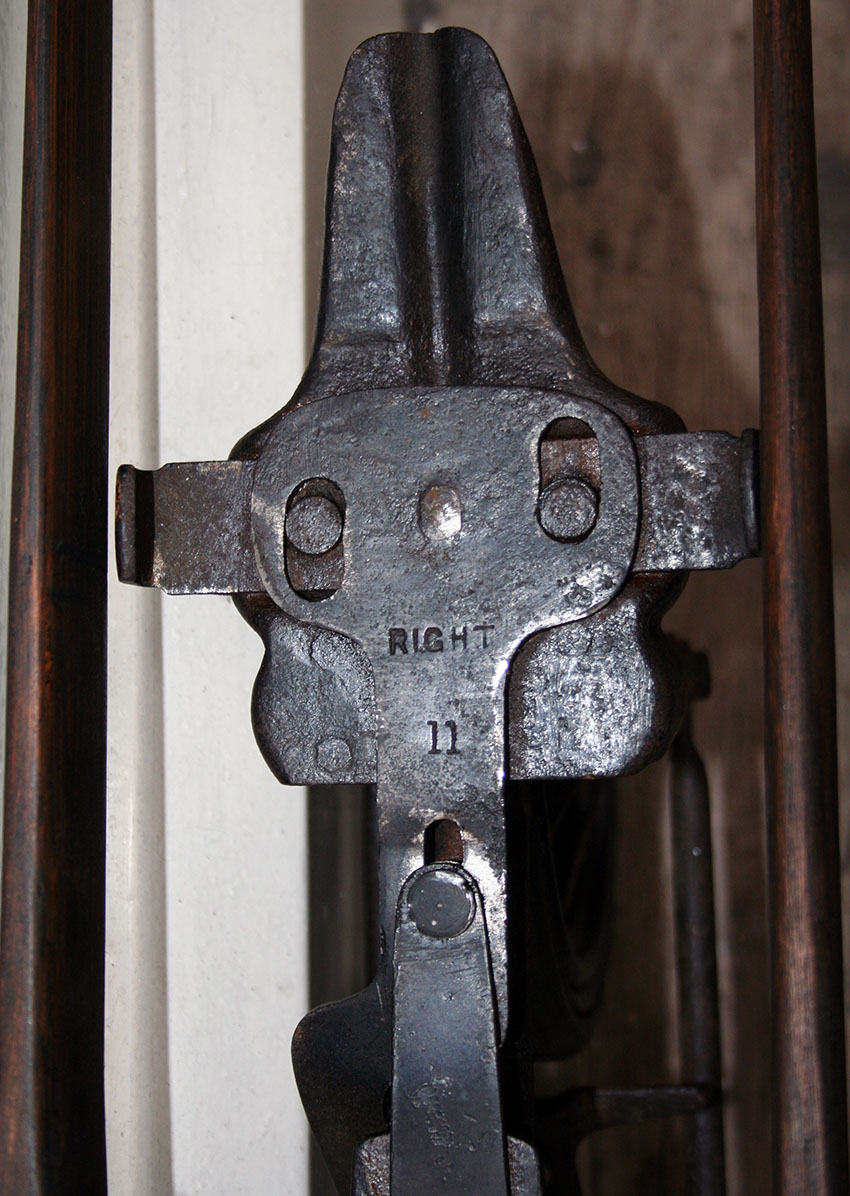
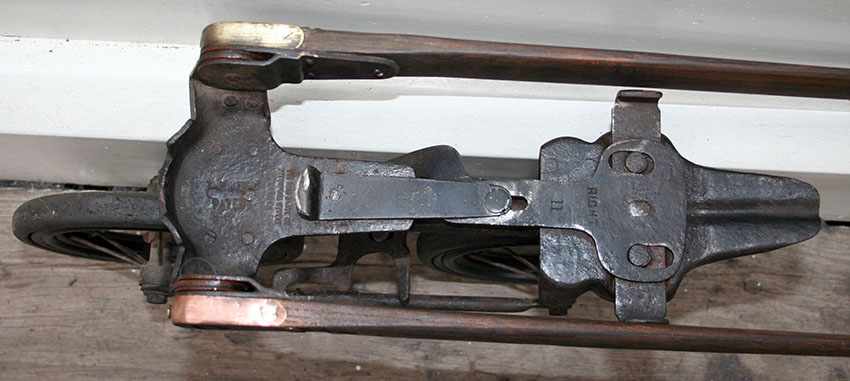

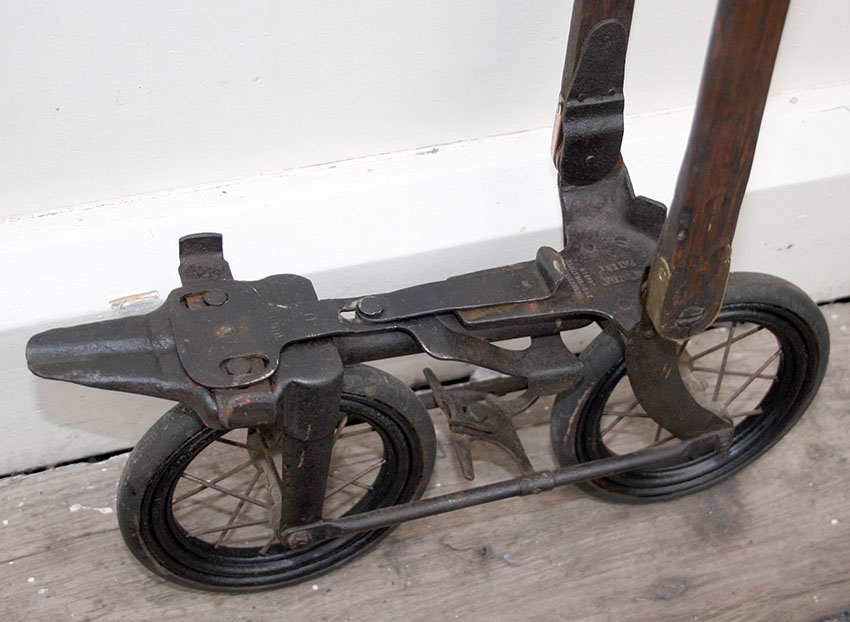







Ritter Road Skates were also marketed around the world, as these articles from New Zealand newspapers illustrate.



The rather more advanced pair of skates shown below are from 1905.



To see a short film of the motorized skates in the picture above,
http://www.britishpathe.com/record.php?id=38391
PLEASE CLICK HERE




 LEATHER GAITERS
LEATHER GAITERS




* Ice Skating: A Pleasure for All, by Victoria Rumble








































